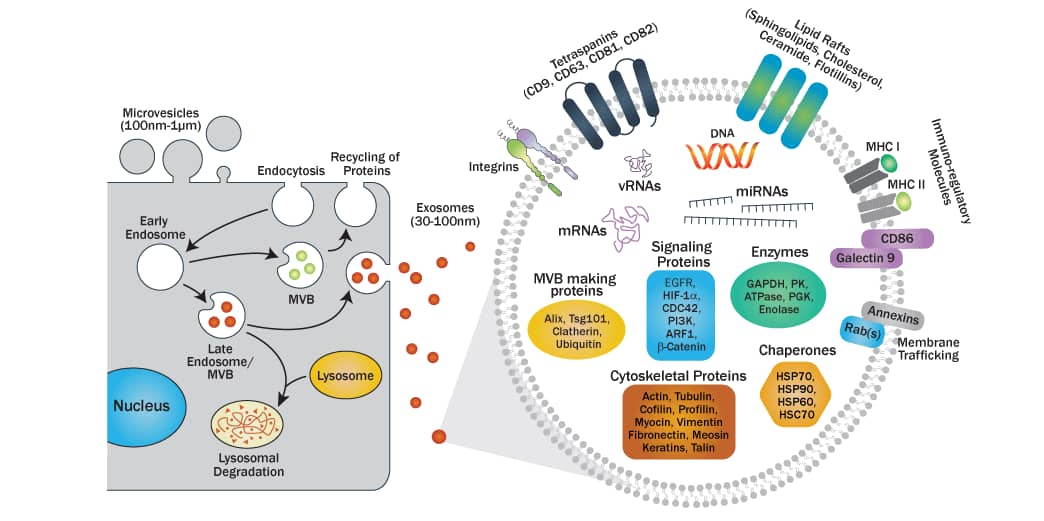Exosomes are spherical to cup-shaped bilayered membrane enclosed nanosize vesicles (30-100 nm) which have the ability to shuttle active cargoes between cells. Johnstone et al. 1987 pioneered in documenting the generation of exosomes in differentiating reticulocytes as a result of the fusion of multi-vesicular endosomes/MVBs with the plasma membrane. However, later studies established that exosomes are actively secreted by almost all types of cells through the process of exocytosis and that exosomes can be found in most of the body fluids (blood, saliva, semen and urine). Structurally, exosomes contain various types of biomolecules (lipids, proteins, DNA, RNA etc.) from the parent cells, and the bacterial/viral proteins or nuclear acids in infected cells. Exosomes act as signalosomes and facilitate intercellular communication through delivering bioactive molecules (Tran et al. 2015)

Owing to their biomedical significance, exosomes have been of great interest to researchers in the last few years. Exosomes are now known to implicate in cellular signaling, metabolic pathways, development/regeneration, cell adhesion/motility, immunosuppression or immunoactivation, inflammation, infectious pathogenesis, cancer progression/metastasis, stemness /reprogramming, hepatic and cardiovascular diseases, and development and homeostasis of nervous system as well as various neurodegenerative diseases (Parkinson's, Alzheimer's and ALS).
Isolation, quantification, characterization and analysis of exosomes (or their contents) are essential for delineating their role in physiology, pathology or related therapeutics. Differential centrifugation is one of the most commonly used techniques for exosome isolation which involves serial centrifugation (200 to 100,000×g) of cell contents or supernatants, finally sedimenting the exosomes at 100,000×g (Ha et al. 2106). Besides being time consuming and requiring technical expertise as well as sophisticated instrument, the major drawback of this technique is the contamination of exosomal fraction with aggregates of cellular proteins and debris/particulates.
Antibody based immunocapture tools are emerging as an easy, quick and highly specific options in exosome research. The isolation of exosomes in these methods is dependent on specific antibodies against exosome-associated antigens such as Alix, CD9, CD24, CD63, CD81, CD82 and TSG101. Bio-Techne provides scientists with the tools they need for research on exosomes, including products for the isolation, quantification and analysis of normal or disease-related exosomes.
-
Tran TH et al. (2015) Exosomes as nanocarriers for immunotherapy of cancer and inflammatory diseases Clin Immunol. 160:46-58. PMID: 25842185.
-
Johnstone RM et al. (1987) Vesicle formation during reticulocyte maturation. Association of plasma membrane activities with released vesicles (exosomes) J Biol Chem 262:9412-9420. PMID: 3597417.
-
Ha, D et al. (2016) Exosomes as therapeutic drug carriers and delivery vehicles across biological membranes: currentperspectives and future challenges Acta Pharm Sin B 6:287-296.